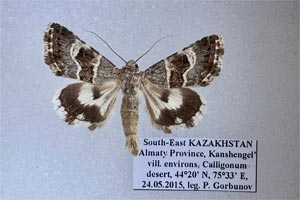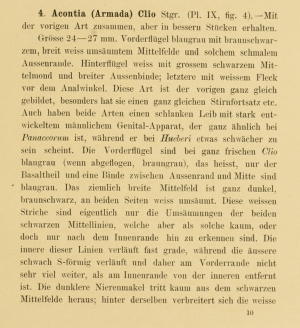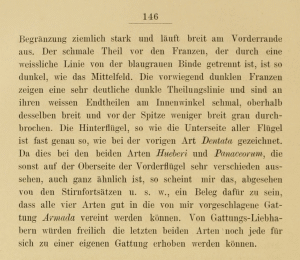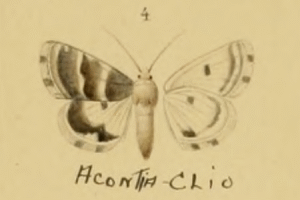

 +8Kontinente:AS
+8Kontinente:AS2. Diagnose
2.1. Geschlecht nicht bestimmt
2.2. Erstbeschreibung
3. Weitere Informationen
3.1. Andere Kombinationen
- Acontia clio Staudinger, 1884 [Originalkombination]
3.2. Synonyme
- Armada barrygoateri Goater, Ronkay & Fibiger, 2003
3.3. Unterarten
- Acontia clio barrygoateri Goater, Ronkay & Fibiger, 2003
3.4. Taxonomie und Faunistik
A. clio wurde von Staudinger (1884: 145-146) aus dem Achal-Tekke-Gebiet in Turkmenistan (Asien) beschrieben.
Fibiger & Ronkay in Goater et al. (2003: 40-41) beschrieben auf der Grundlage eines einzelnen Weibchens aus der russischen Steppenregion nördlich des Kaukasus ("Central Predkavkazye, Stavropol district, 12 km east of Roshino") Armada barrygoateri als neue Art und erklärten: "The new species is the western sibling of A. clio (Staudinger, 1884)." Je nachdem, ob man die Manytsch-Niederung oder den Kaukasus-Hauptkamm als Grenze zwischen Europa und Asien ansieht, gehört dieser Fund nach Asien oder doch nach Europa.
Matov et al. (2021: 348) stuften A. barrygoateri zur Subspecies von A. clio herab, wodurch A. clio jetzt in Europa s.l. vorkommt. Im englischen Abstract heißt es: "In 2019 and 2020, the population of Armada Staudinger, 1884 represented by specimens with light colouration of forewings (identical with this in Armada clio (Staudinger, 1884)) and with dark colouration (as in Armada barrygoateri Fibiger et Ronkay, 2003) was found in Stavropol Region of Russia. Study of genitalia of males and females with various colouration of forewings showed that all specimens belong to one species. Comparison of the females with the holotype of A. barrygoateri, described by a single female, and comparison of male genitalia with those of a topotype of A. clio showed the absence of clear differences between A. clio and A. barrygoateri, therefore the taxonomic rank of A. barrygoateri was changed to the subspecies, Armada clio barrygoateri stat. n., with the range limited by semideserts of Ciscaucasia."
Nach der Fundpunktkarte von Matov et al. (2021) kommt die nominotypische Unterart in Turkmenistan, im Norden des Iran, in Usbekistan, im Südwesten von Tadschikistan, im SW von Kirgisistan und im Süden des asiatischen Teils von Kasachstan vor, die ssp. pakistana in Pakistan und die ssp. barrygoateri in der Region Stawropol in Russland.
(Autor: Erwin Rennwald)
3.5. Literatur
- Beschreibung als Armada barrygoateri: Goater, B., Ronkay, L. & M. Fibiger (2003): Noctuidae europaeae 10. 1-452, pl. 1-16 [hier: 40-41, 250, pl. 1 fig 8]. Sorø (Entomological Press).
- Матов, А.Ю., Полтавский, А.Н. & П.Н. Коржов (2021): Ревизия таксономического ранга Armada barrygoateri Fibiger et Ronkay, 2003 (Lepidoptera: Noctuidae: Acontiinae) [Matov, A.Yu., Poltavsky, A. N. & P.N. Korzhov (2021): Revision of the taxonomic rank of Armada barrygoateri Fibiger et Ronkay, 2003 (Lepidoptera: Noctuidae: Acontiinae)]. — Кавказский энтомологический бюллетень [Caucasian Entomological Bulletin] 17 (2): 345-349. [Archivdatei auf web.archive.org] bzw. [zum PDF-Download auf researchgate.net]
- Erstbeschreibung: Staudinger, O. (1884): Beitrag zur Kenntniss der Lepidopteren-Fauna des Achal-Tekke-Gebietes. — Mémoires sur les lépidoptères 1: 139-154, pl. IX.















